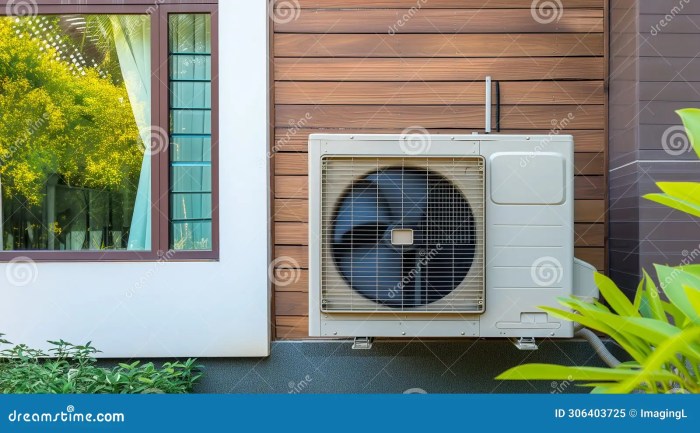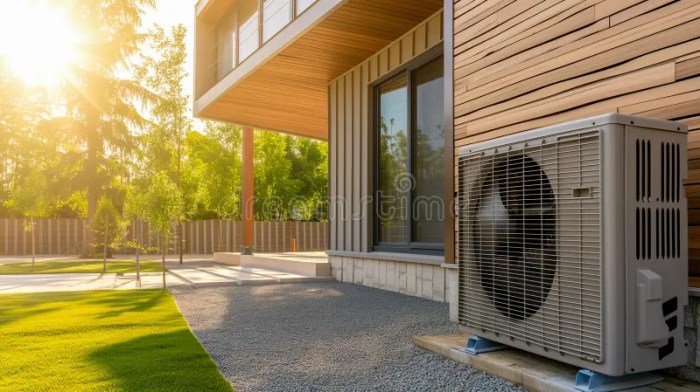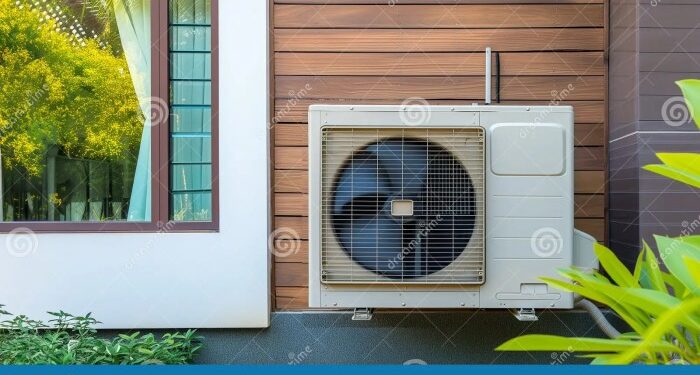Discover the latest innovations in eco-friendly air conditioning systems designed for modern homes. From energy-efficient features to environmental impact, this guide explores everything you need to know to make your home more sustainable and comfortable.
Types of eco-friendly air conditioning systems
Eco-friendly air conditioning systems are becoming increasingly popular for modern homes due to their energy efficiency and environmental benefits. Here are three types of eco-friendly air conditioning systems suitable for modern homes:
Central Air Systems
Central air systems are a common choice for larger homes. They work by cooling air in a central location and distributing it throughout the house using ductwork. Central air systems can be made more eco-friendly by using energy-efficient models and proper insulation.
Advantages:
- Efficient cooling for larger homes
- Can be integrated with smart thermostats for better energy management
Disadvantages:
- Installation can be costly, especially if ductwork needs to be added
- Not ideal for smaller homes or apartments
Ductless Mini-Split Systems
Ductless mini-split systems are a great option for smaller homes or individual rooms. They consist of an outdoor compressor unit and one or more indoor air-handling units. These systems are more energy-efficient than traditional central air systems because they don't lose energy through ductwork.Advantages:
- Energy-efficient and customizable for different zones
- Easy installation without the need for ductwork
Disadvantages:
- Higher upfront cost compared to window units
- May not be ideal for cooling an entire house
Geothermal Heat Pumps
Geothermal heat pumps use the constant temperature of the earth to heat and cool homes. They are considered one of the most eco-friendly options as they rely on renewable energy. While installation costs can be high, geothermal heat pumps can provide long-term energy savings.Advantages:
- Highly energy-efficient and environmentally friendly
- Low operating costs over time
Disadvantages:
- High upfront installation costs
- Requires access to a large outdoor space for installation
Overall, each type of eco-friendly air conditioning system has its own benefits and considerations. Choosing the right system for your home will depend on factors such as your budget, home size, and environmental goals.
Energy efficiency features
When looking for eco-friendly air conditioning systems, it is crucial to consider their energy efficiency features. These features not only help reduce energy consumption but also contribute to lower utility bills and a smaller carbon footprint.
Key Energy-Efficient Features
- SEER (Seasonal Energy Efficiency Ratio): SEER is a measure of an air conditioner's efficiency over an entire cooling season. The higher the SEER rating, the more energy-efficient the system is. Look for systems with a higher SEER rating to ensure optimal energy savings.
- Inverter Technology: Air conditioning systems with inverter technology are more energy-efficient compared to traditional systems. This technology allows the compressor to operate at varying speeds, adjusting the cooling output based on the temperature requirements. As a result, inverter technology can lead to significant energy savings and better temperature control.
- Energy Star Certification: Opt for air conditioning systems that are Energy Star certified. These systems meet strict energy efficiency guidelines set by the Environmental Protection Agency (EPA) and can help reduce energy consumption while providing reliable performance.
Environmental impact

Air conditioning systems have a significant impact on the environment due to their energy consumption and refrigerant usage. Eco-friendly air conditioning systems play a crucial role in reducing greenhouse gas emissions and minimizing environmental harm.
Reduction of greenhouse gas emissions
Eco-friendly air conditioning systems are designed to be more energy-efficient, resulting in lower electricity consumption. By reducing the amount of energy needed to cool a space, these systems help lower the overall carbon footprint associated with air conditioning. This, in turn, helps mitigate the impact of climate change by decreasing greenhouse gas emissions.
Use of eco-friendly refrigerants
Traditional air conditioning systems often use refrigerants that are harmful to the environment, such as hydrochlorofluorocarbons (HCFCs) and hydrofluorocarbons (HFCs). Eco-friendly air conditioning systems, on the other hand, utilize refrigerants like R-32 or R-410A, which have lower global warming potential (GWP) and ozone depletion potential (ODP).
These eco-friendly refrigerants are less harmful to the environment and contribute to reducing the system's overall environmental impact.
Importance of proper installation and maintenance
In addition to using eco-friendly refrigerants, proper installation and regular maintenance of air conditioning systems are crucial in minimizing their environmental impact. A well-installed system operates more efficiently, reducing energy consumption and greenhouse gas emissions. Regular maintenance helps ensure that the system remains in optimal condition, preventing leaks and minimizing the release of refrigerants into the atmosphere.
By investing in proper installation and maintenance practices, homeowners can significantly reduce the environmental impact of their air conditioning systems.
Smart technology integration
Smart technology plays a crucial role in enhancing the efficiency of eco-friendly air conditioning systems. By utilizing smart thermostats and controls, along with IoT devices and machine learning algorithms, these systems can optimize energy usage and provide a more comfortable indoor environment.
Smart Thermostats and Controls
Smart thermostats allow homeowners to set customized temperature schedules based on their preferences and daily routines. These devices can also adjust settings automatically to conserve energy when the house is unoccupied or during times of lower demand. By integrating with the air conditioning system, smart thermostats help reduce energy waste and improve overall efficiency.
IoT Devices for Energy Optimization
Internet of Things (IoT) devices like occupancy sensors and weather forecast integration can provide valuable data to optimize energy usage in air conditioning systems. These devices can adjust cooling levels based on real-time occupancy and external weather conditions, ensuring that the system operates at peak efficiency while minimizing energy consumption.
Machine Learning Algorithms
Machine learning algorithms can analyze historical data and user behavior patterns to predict energy usage and optimize performance. By continuously learning and adapting to changing conditions, these algorithms help eco-friendly air conditioning systems operate more efficiently, reducing energy costs and environmental impact.
End of Discussion

In conclusion, embracing eco-friendly air conditioning systems not only reduces your carbon footprint but also enhances your quality of life. Make the switch today and enjoy a greener, more efficient cooling experience in your modern home.
Question Bank
What are the key energy-efficient features to look for in eco-friendly air conditioning systems?
Key features include variable-speed compressors, smart thermostats, and high SEER ratings.
How do eco-friendly air conditioning systems reduce greenhouse gas emissions?
They use eco-friendly refrigerants and are designed to operate more efficiently, reducing overall energy consumption.
Can IoT devices really optimize energy usage in air conditioning systems?
Yes, IoT devices can collect data and adjust settings in real-time to ensure optimal energy usage.
What is the role of machine learning algorithms in improving the performance of eco-friendly AC systems?
Machine learning algorithms can analyze data patterns to optimize system performance and energy efficiency.














